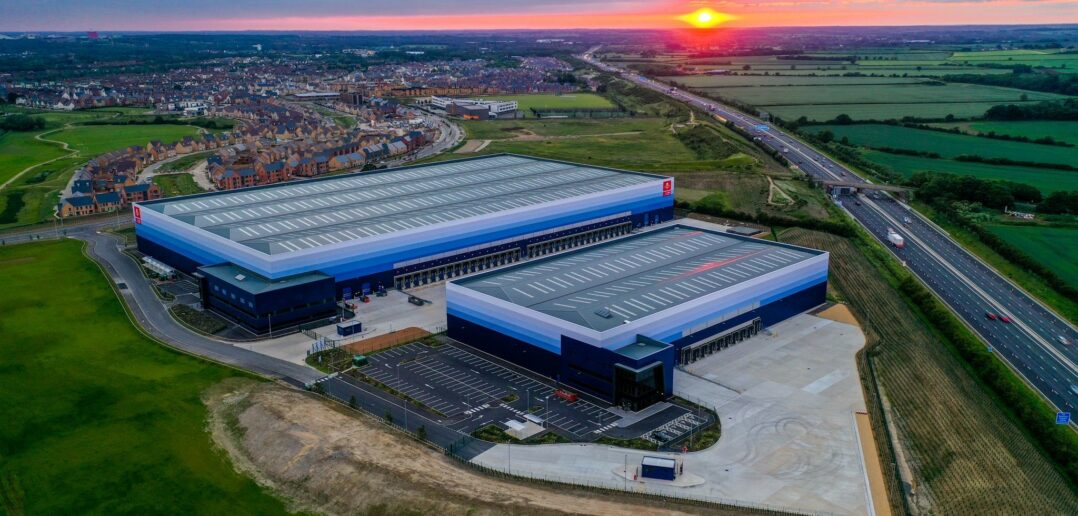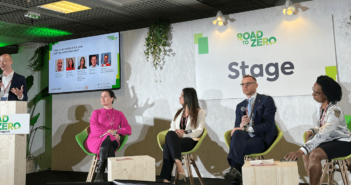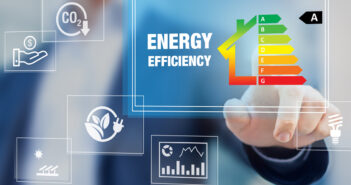GLP started as a logistics specialist and leveraged its experience to expand into high-growth sectors of the global economy including data infrastructure and renewable energy. With operations in the US, Europe, China, Japan, Brazil and Southeast Asia GLP has more than $120 billion of assets under management across its global operations. In Europe, In response to the continued growing demand for logistics space, GLP has accelerated its development programme, starting 27 new projects comprising 688,000 SQM of new space across Europe – a new record for GLP.
Logistics as an asset class has been heavily impacted by a rise in e-commerce and the demand for speed, aiming to make the supply chain more efficient as well as finding ways to create better working environments and better places for logistics operations to take place. This requires investing in logistics and supply chain technologies as well as the assets themselves. The size of logistic buildings roof spaces present a major opportunity for renewable power generation and the scale of the logistics parks provide an ideal opportunity to increase biodiversity and contribute to environments for wildlife as well as invest in better amenities for logistic park occupiers.
Sustainability has always been part of our DNA, and we work with our supply chain to create better and more efficient buildings as well as specify more renewable materials.
The Magnitude 314 building at Milton Keynes in the UK was a landmark development, being the first in the world to be certified as net-zero carbon for construction, according to the UK Green Building Council’s (UKGBC) Net Zero Carbon Buildings Framework Definition.
GLP set a baseline for performance, which was assessed to use 12 percent less embodied carbon than a warehouse that was built to UK building regulations. A team of 20 consultants and specialists were involved to spark innovations in the process and in the supply chain required for development. Techniques included the use of lower carbon concrete, reducing transportation of earth off site and leaving ceilings exposed.
The whole life embodied carbon of the warehouse was calculated to be 12,270 tons of carbon dioxide, 25.8 percent below a standard logistics building. This carbon was offset using UKGBC-approved methods, including tree planting.
Creating social value principles across all new developments is a vital component of a successful development, creating community as well as occupier engagement with our projects. We prioritize wellbeing and making the working environment as comfortable as possible, such as maximizing natural lighting, which also saves energy, greening the landscape and more. Logistics facilities need to provide amenities such as convenience stores, nurseries and gyms as occupiers demand facilities to provide drivers as well as their own workforces the best in on site facilities.
Community engagement is perhaps now even more important. A large real estate development can have a significant impact on the local economy and community in which it is built. However, what we have seen is there’s not a universal set of international standards to quantify social impact. There’s a lot of social value driven by a large logistics park’s construction and operation, and we’re looking for better ways to quantify this.
We carried out a study in the UK to measure the Social Value Impact of Magnitude 314, a logistics warehouse at Magna Park, Milton Keynes, in order to better understand the social value generated from the development.
We engaged a social value consultant to collect data during the development process in order to measure the social value generated by providing skills and employment, promoting local businesses, creating stronger communities and protecting the environment. The measurement framework for GLP has been built around the Real Estate Social Value Measurement Methodology called the RE TOMs 2.0 (Real Estate Themes, Outcomes and Measures). A total of £4.8 million ($6.6million; €5.7 million) of social value was created from the £12 million project cost, by creating employment, buying locally and donating to community projects, among other things.
Given the pressures to reduce energy consumption not just regionally but globally, we recognize the opportunity that renewable energy provides and are making investments globally in solar, wind, and battery technologies. Presently the largest opportunity is our logistics roofs which are built to accommodate the weight of solar panels, even if solar panels aren’t there yet. At of the end of last year our global installed capacity was 415 MW, an increase of 85 percent YoY driven by solar installation in Europe and China with our joint venture in China set to become China’s largest rooftop solar power provider with total contracted capacity of one gigawatt achieved by the end of 2021.
Our aim is to be carbon neutral before 2050. The focus is on making our transition to net-zero credible and we’re simultaneously working to reduce both embodied and operational carbon emissions. We are focusing on less carbon-intensive construction methods and materials; for example, using timber frames in certain markets to reduce the usage of steel, lower carbon concrete mixes and foundations that require fewer materials.
But, while we’ve developed most of our assets in Asia, in Europe we have an operating portfolio of 6.4 million SQ M, comprising 216 properties and a further 21 under development. We are working to reduce operational carbon, integrate natural lighting, air tightness, LED lighting etc across our development portfolio as well as work closely with customers to reduce their own carbon footprint. One example in the way we are doing this, is our strategic partnership with Planet Mark. We will shortly be announcing an exciting new programme to help support our customers with their journey to net zero working with the Planet Mark team.
We are taking action and making progress in reducing carbon in our portfolio, but we recognize that it’s a work in progress and it will take some time particularly with across our global operations.
You may also be interested in:
- MIPIM World talks with Hélène Chartier of C40 about zero carbon emission cities and the launch of the third edition of C40-Reinventing Cities: « 7 examples of reinventing cities to be low carbon »
- The MIPIM white paper on The Race to Carbon Zero: decarbonising real estate
- MIPIM World’s interview with Peter Cosmetatos of CREFC Europe on green finance



